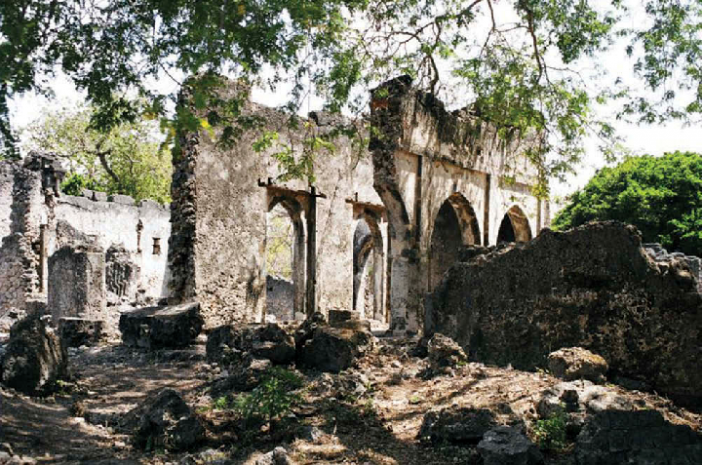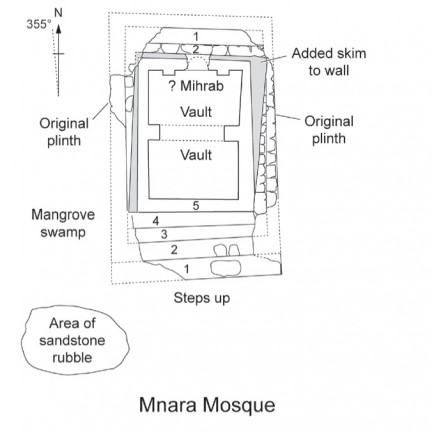Songo Mnara Mosque
History
The site's name-giving mosque is situated in an extremely odd area. It is located about 30 meters from the beach on a little island in the water. It is surrounded by water at high tide and is only accessible at low tide by walking through muddy flats. It was built in the 15th Century over two phases.
Urban and Architectural
First phase : The building's main entrance is located on a rectangular platform that is 9.3 x 5.75 meters in size and has five steps to the south. There are three steps on each of the other sides. The structure is built of coral, but the steps have sandstone slabs covering their upper surfaces. The prayer room is rectangular (4.45 x 3.0/3.25m) with side-engaged columns and a qibla of 355 degrees. The mihrab is no longer there, but the frame architrave's pilasters and some coral carvings, including a faceted column and a portion of a capital, are still discernible.
In the second stage, the exterior walls on the east, north, and west sides were rebuilt and given a masonry skim.
Description
It is odd that in the second phase of the building, it was not oriented to the previous structure, generating a new external qibla of 00 degrees. Perhaps this was done to realign the mosque to face Mecca in the proper direction.
References
https://en.wikipedia.org/wiki/Songo_Mnara
https://www.zamaniproject.org/site-tanzania-songo-mnara.html
Details
Location
Ruins of Songo Mnara UNESCO World Heritage SIte, Songa Mnara Island, Tanzania
Worshippers
16
Year of Build
15th Centurey
Area
50
Drawings
Map
History
The site's name-giving mosque is situated in an extremely odd area. It is located about 30 meters from the beach on a little island in the water. It is surrounded by water at high tide and is only accessible at low tide by walking through muddy flats. It was built in the 15th Century over two phases.
Urban and Architectural
First phase : The building's main entrance is located on a rectangular platform that is 9.3 x 5.75 meters in size and has five steps to the south. There are three steps on each of the other sides. The structure is built of coral, but the steps have sandstone slabs covering their upper surfaces. The prayer room is rectangular (4.45 x 3.0/3.25m) with side-engaged columns and a qibla of 355 degrees. The mihrab is no longer there, but the frame architrave's pilasters and some coral carvings, including a faceted column and a portion of a capital, are still discernible.
In the second stage, the exterior walls on the east, north, and west sides were rebuilt and given a masonry skim.
Description
It is odd that in the second phase of the building, it was not oriented to the previous structure, generating a new external qibla of 00 degrees. Perhaps this was done to realign the mosque to face Mecca in the proper direction.




